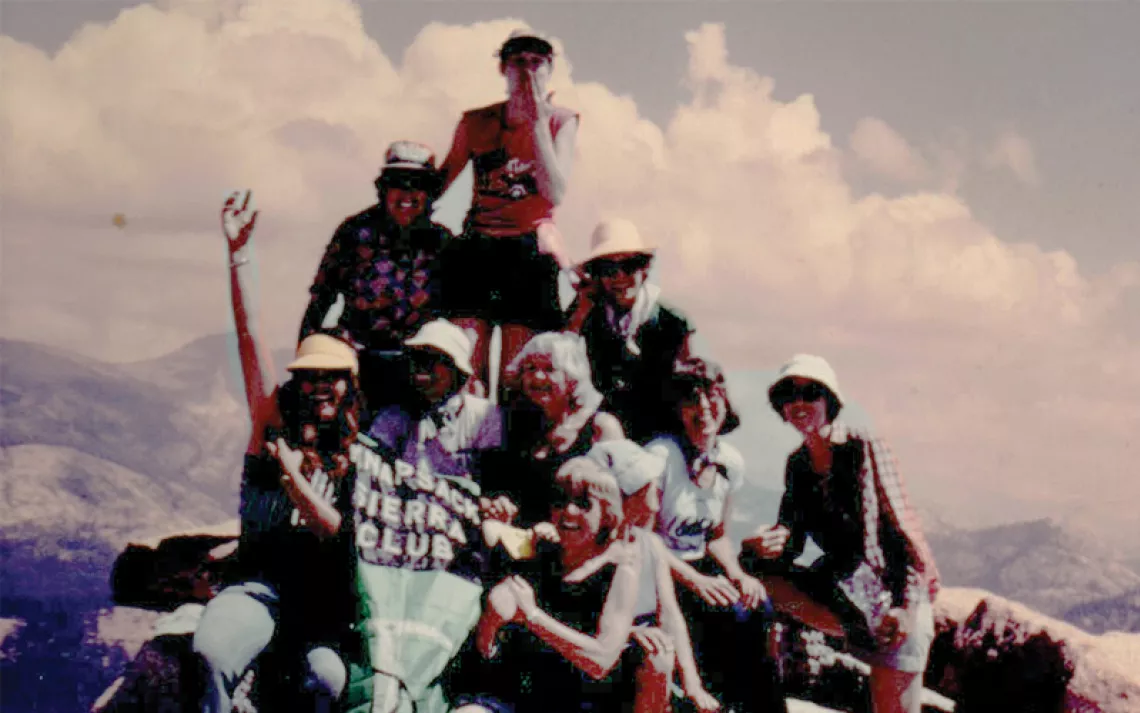Inside the “Plogging” Movement
Here’s what it’s like to go jogging for the environment

Photos courtesy of Cari Shane
“Plogging” (no, there isn’t a typo) is the exercise of picking up strewn garbage while jogging. What began as an environmentally conscious marathon-training method has become an international trend and a US movement among urban and suburban runners. Plogging—not to be confused with “trashercize,” the concept of picking up trash while walking—was born in Sweden as a portmanteau of “jogging” and “plocka upp,” Swedish for “pick up.” According to Keep America Beautiful, there are millions of ploggers worldwide, and even a plogging app.
Prior to Earth Day last month, I looked into volunteer opportunities in my city—Washington, DC—and discovered the exercise trend was part of the mayor’s #FitDC initiative. I decided to grab my running shoes and practice plogging with VIDA Fitness, the group that cosponsored DC’s second-annual Earth Day plogging event.
 On a sunny day in late March, VIDA’s Allison Rand handed out gloves and bags to a group of 11 ploggers. Then we hit the streets. “We’re combining physical activity with doing something good for the earth,” said Nancy Burham, general manager of VIDA Fitness, before sending us off with some basic plogging advice: “It’s key to be aware of your posture. So, use your legs and bend your knees and not your back. [And, make] sure that you are alternating the [garbage] bag from the right hand to the left hand so you’re not carrying all your load on one side and straining your neck.”
On a sunny day in late March, VIDA’s Allison Rand handed out gloves and bags to a group of 11 ploggers. Then we hit the streets. “We’re combining physical activity with doing something good for the earth,” said Nancy Burham, general manager of VIDA Fitness, before sending us off with some basic plogging advice: “It’s key to be aware of your posture. So, use your legs and bend your knees and not your back. [And, make] sure that you are alternating the [garbage] bag from the right hand to the left hand so you’re not carrying all your load on one side and straining your neck.”
We took off through the streets of DC clad in purple gloves and toting classic white garbage bags. I checked for traffic, then jumped from the sidewalk into the street to grab a wet newspaper stuck up against the curb. I ran down the sidewalk, jockeying past passersby to pick up a plastic fork, a cigarette butt, a water bottle, even clothing. Though our bags were getting heavier, we ploggers laughed as we elbowed one another, vying to be first to grab each piece of garbage. “We were competing to see who could make the biggest impact,” says Michael Tran, 27, “in a fun way.” Tran, a fellow first-time plogger, filled up four trash bags during our 30-minute run.
 “The laughing came from everyone just having a good time,” adds Kelly McCarey, 28, who says she enjoyed the feeling of community and competition. “Everyone started off with one bag [and soon it was], 'Can I have a second bag?' 'A third bag?'” Rand, jogging alongside, handed out extra bags as our group ran through a district park, a residential neighborhood marked by 19th-century row houses, and back into a business district rife with construction, restaurants, stores, and high-rises. After covering about two miles in DC’s Shaw neighborhood, our group returned to home base with about 20 bags full of our city’s detritus.
“The laughing came from everyone just having a good time,” adds Kelly McCarey, 28, who says she enjoyed the feeling of community and competition. “Everyone started off with one bag [and soon it was], 'Can I have a second bag?' 'A third bag?'” Rand, jogging alongside, handed out extra bags as our group ran through a district park, a residential neighborhood marked by 19th-century row houses, and back into a business district rife with construction, restaurants, stores, and high-rises. After covering about two miles in DC’s Shaw neighborhood, our group returned to home base with about 20 bags full of our city’s detritus.
“We got a lot of looks,” reflects Jason Royce, 30, who had also never plogged before. “At first I think it was, ‘Look at all these crazies,’ but then since we were wearing gloves, after about 10 seconds, it became fairly obvious.” He adds, “There were people waiting for the bus on one corner, and when they realized what we were doing, they all had smiles on their faces.”
 Jess Carlin, 34, another first-time plogger, found the experience “awesome” and plans to enlist jogger friends. Her approach, she says, is simple. “I’ll tell them, “You’re already running in the community; why not make it more impactful by making a difference in your neighborhood and picking up garbage?”
Jess Carlin, 34, another first-time plogger, found the experience “awesome” and plans to enlist jogger friends. Her approach, she says, is simple. “I’ll tell them, “You’re already running in the community; why not make it more impactful by making a difference in your neighborhood and picking up garbage?”
That’s what Kathleen Rogers, president of plogger-supporting Earth Day Network, says plogging’s all about: “Connecting what you are doing in your daily life and noticing what’s around you and doing something about it.” Because, unfortunately, as Rogers writes, there is an endless supply of material to be plogged.
 The Magazine of The Sierra Club
The Magazine of The Sierra Club



